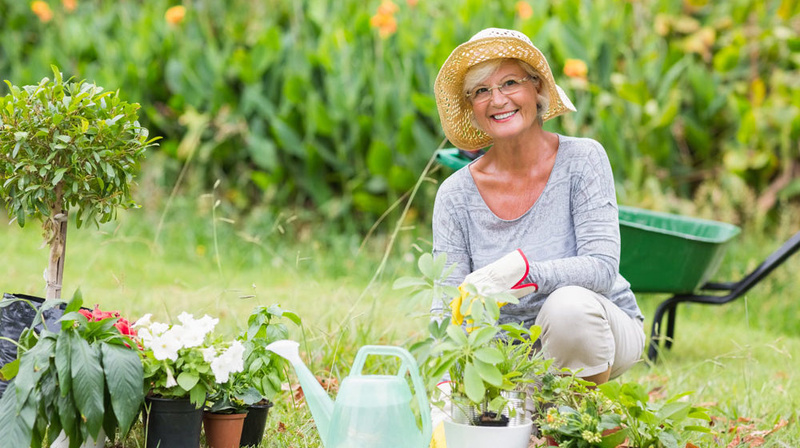
Wear Protective Clothing When Working Outside
Working outside in your yard? Don’t dismiss the importance of wearing protective clothing. Guard your head, feet, and body. Consider our suggestions for footwear, headgear, shirts, and pants that will keep you safe from the sun’s rays, biting insects, and flying debris.
Florida, as we all know, is hot and humid in the summertime and stays that way well into the fall. Shorts, tanks, and flip flops are de rigueur when you want to stay cool outside.
For yard work, however, consider stowing the go-to warm-weather garments and, instead, wear clothes that will offer protection from possible injury.
Outdoor Hazards
The right footwear, headgear, and clothing can help prevent injury from:
- Harmful ultraviolet rays from the sun
- Ant, insect, and spider bites
- Bee and wasp stings
- Snake strikes
- Mower and edger blades
- String trimmers
- Flying pebbles and debris
Protective Clothing
Pants and Shirts
Wear long pants. Jeans offer great protection but are hot on Florida summer afternoons. Purchase a pair of painter’s pants that are lighter weight and have assorted pockets that can carry small gardening tools such as clippers and shears.
Long-sleeved shirts are great for keeping the sun off your arms. Search outdoor stores and watersports sites for shirts that wick away sweat and have extra vents. Classic fishing shirts with the mesh upper back and flap over the top are comfortable and allow for maximum air movement.
Footwear
Shelve the flip flops during lawn care tasks. Flip flops offer minimal protection.
The best footwear option in terms of protection is lightweight yet sturdy boots. Purchase a pair at least 8” tall to cover the ankles. These do not have to be steel-toed, construction-grade boots, but they should be sturdy enough to deflect rocks flying out from a string trimmer or the bite of a disturbed insect or snake. Many boot manufacturers carry models specifically for wearing in hot weather.
Boots may not completely deflect a wayward edger blade, but they will provide resistance and reduce the severity of an injury.
If boots are not in the budget, wear a pair of sneakers with long socks. Socks will deter ants and spiders who crawl up shoes in search of tasty skin.
Gardening clogs provide some protection and are easy to slip on. However, they only cover the front part of the foot, not the heel or ankle. Thus, those parts are vulnerable to bites and stings.
Whatever type of footwear you choose, remember to look inside them before putting them on, especially if they stay in a garage or shed. Enclosed dark spaces are welcoming environments for roaches, spiders, and snakes. Turn shoes and boots upside down and shake them out before putting your feet inside.
Head Protection
The classic gardener’s straw hat with a large brim offers great protection from the sun. The deep brim shades both the back of the neck and the face.
Outdoor stores and gardening centers carry other options, including floppy fabric hats and breathable caps with bills and flaps that cover the ears and neck.
Hands and Eyes
Gloves of all types are available online and at garden centers and outdoor stores. For gardening, purchase flexible fabric gloves with latex undersides. For handling string trimmers and edgers, get leather or canvas work gloves.
Don’t forget about your eyes! When working with lawn equipment that kicks up rocks and debris, wear goggles or, at the very least, sunglasses.
Skin Protection
Apply sunscreen, especially if you are not wearing a long-sleeved shirt. Put it on your arms, face, chest, hands, and neck.
Apply insect repellent. In Florida, where we deal with mosquitoes and ticks, it is important to buy products formulated to repel these bugs. Mosquitoes and ticks carry diseases, so do not take their bites lightly.